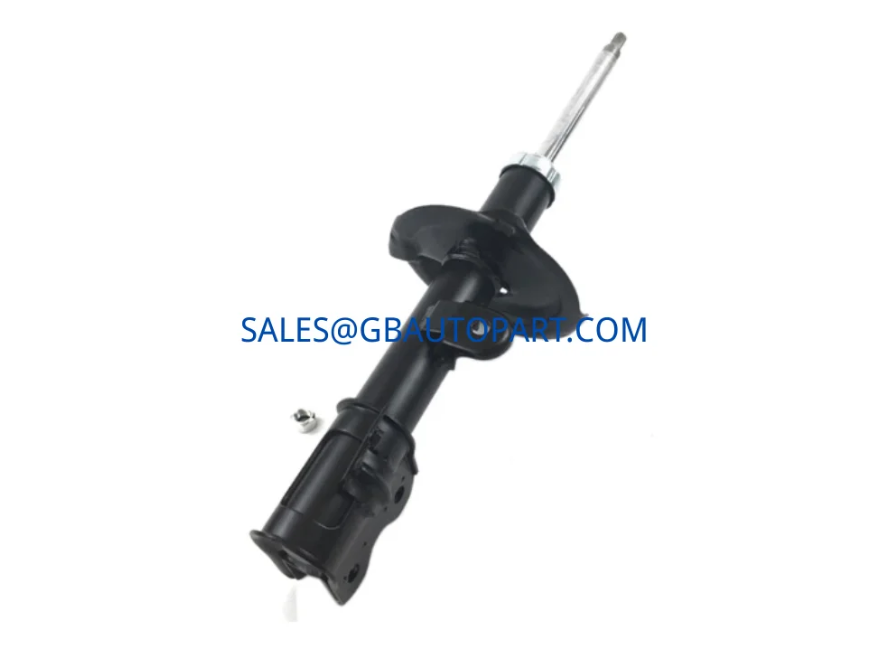
Every vehicle is a complex machine, and each of its thousands of parts plays a specific role. While some components like the engine or tires are widely known, others, such as those within the suspension system, often go unnoticed until they fail. Among these critical but less-understood components is the OEM part 54650-H9200, a front-left suspension strut assembly. Understanding the function of this part is not just for mechanics; it’s essential for any car owner who wants to maintain their vehicle’s safety, performance, and overall value. This article will provide a comprehensive guide to the 54650-H9200 part, exploring its purpose, its key features, and why its proper function is vital for a secure and comfortable driving experience.
What is a Suspension Strut and Why Does It Matter?
Before we dive into the specifics of 54650-H9200, let’s first understand the broader context of a vehicle’s suspension system. The suspension is the system of springs, shock absorbers, and linkages that connects a vehicle to its wheels. This system serves two primary functions: it keeps the tires in contact with the road, and it absorbs the energy from bumps and road imperfections to provide a smooth ride.
The suspension strut is a key component within this system. It’s essentially a combination of a shock absorber and a coil spring, all integrated into a single unit. The strut’s main purpose is to support the vehicle’s weight and dampen the oscillations of the spring. In doing so, it prevents the car from bouncing uncontrollably after hitting a bump. A well-functioning suspension strut ensures that your vehicle’s tires maintain consistent contact with the road surface, which is crucial for effective steering, braking, and overall stability.
The Specifics of OEM Part 54650-H920

The OEM part number 54650-H9200 is a specific front-left suspension strut assembly designed for certain Kia and Hyundai models. Being an Original Equipment Manufacturer (OEM) part, it means that it is an identical replacement for the part that came with the vehicle from the factory. This guarantees a perfect fit and function, ensuring the vehicle’s original performance standards are maintained.
The primary function of the 54650-H9200 is to manage the motion of the left-front wheel. When the car drives over an uneven surface, the wheel moves up and down. The strut assembly, with its internal gas-pressure and twin-tube design, controls this movement by converting kinetic energy (the motion of the wheel) into thermal energy (heat). This process, known as damping, prevents the vehicle from swaying or bouncing excessively.
Key Features of the Suspension Strut 54650-H9200:
- Damping Control: The 54650-H9200 provides precise control over wheel movement, which is essential for maintaining stability during turns and sudden maneuvers.
- Support for Vehicle Weight: As a strut assembly, it directly supports a significant portion of the vehicle’s weight, helping to maintain the correct ride height.
- Integral Components: This part often comes as a complete assembly, including the strut, coil spring, and mount. This integrated design simplifies installation and ensures all components are perfectly matched for optimal performance.
The Consequences of a Failing Suspension Strut
A failing suspension strut, such as the 54650-H9200, can have a serious impact on your vehicle’s performance and, more importantly, your safety. When a strut’s damping ability is compromised, it can lead to a variety of issues that can be felt and seen.
Symptoms of a Worn-Out Strut:
- Rougher Ride: The most noticeable symptom is a significant loss of ride comfort. The vehicle may feel every bump, jolt, and pothole, and it might continue to bounce long after hitting an obstacle.
- Poor Handling and Stability: A failing strut can cause the vehicle to sway or lean more in turns. This reduces your control over the vehicle, making it harder to steer and increasing the risk of losing traction.
- Uneven Tire Wear: Without proper damping, the tire can “hop” or bounce on the road surface. This leads to a scalloped or cupped wear pattern on the tire, reducing its lifespan and compromising grip.
- Braking Issues: A worn strut can cause a phenomenon called “brake dive,” where the front of the vehicle lurches forward excessively during hard braking. This can increase your stopping distance and impact your ability to maintain control.
- Visible Leaks or Damage: Sometimes, a failing strut may show physical signs like a fluid leak from the strut body or visible dents and damage. This indicates the internal seals have failed, and the damping fluid has escaped.
Replacing a worn-out 54650-H9200 with a new, high-quality OEM or equivalent part is crucial. It ensures that the suspension system can once again perform its critical safety and comfort functions.
The Value of OEM Parts: Why 54650-H9200 is a Smart Choice
When it comes to vehicle maintenance, the choice between OEM and aftermarket parts is a common dilemma. While aftermarket parts can sometimes be more affordable, choosing an OEM part like 54650-H9200 offers significant benefits.
OEM parts are manufactured to the same specifications and quality standards as the original components installed on your vehicle. This guarantees a perfect fit, which is paramount for a suspension component like a strut. An improperly fitted strut can lead to accelerated wear on other parts, and it may not perform as intended, which can compromise both safety and ride quality. Furthermore, an OEM part ensures you are getting a reliable product that has been rigorously tested to meet the vehicle manufacturer’s demanding standards.
The integrity of your suspension system directly impacts your safety. A reliable, well-functioning 54650-H9200 ensures that you can handle unexpected road conditions with confidence. By choosing a part that’s guaranteed to work exactly as the manufacturer intended, you’re making a sound investment in your vehicle’s longevity and, most importantly, the safety of yourself and your passengers.
The Role of a Healthy Suspension System
The suspension system is often called the foundation of your vehicle’s handling. It’s not just about comfort; it’s about control. A healthy suspension system, supported by components like the 54650-H9200, allows the tires to maintain optimal contact with the road. This maximized contact area ensures that all of the forces from steering, braking, and acceleration are effectively transmitted to the road. This leads to predictable and responsive handling, giving the driver confidence and control in all situations.
Beyond safety, a well-maintained suspension system protects other parts of your vehicle. The shock absorption provided by the struts reduces the stress on the chassis, steering components, and even the body panels. This helps to prevent premature wear and tear, ultimately extending the life of the vehicle and saving you money on future repairs.
Ultimately, understanding the function and importance of parts like the 54650-H9200 empowers you to be a more informed car owner. It allows you to recognize the early signs of a problem and make proactive decisions to maintain your vehicle’s health. Taking good care of your vehicle is not just about making sure it runs; it’s about ensuring it runs safely, smoothly, and reliably for years to come.
FAQ: Frequently Asked Questions about Suspension Struts
Q1: How long do suspension struts typically last?
A1: The lifespan of a suspension strut can vary widely based on driving conditions, habits, and vehicle type. On average, they last between 50,000 and 100,000 miles. Driving on rough roads, carrying heavy loads, or aggressive driving can shorten their lifespan.
Q2: Should I replace both front struts at the same time?
A2: Yes, it is highly recommended to replace both front struts (e.g., the 54650-H9200 and its counterpart) at the same time. This ensures balanced performance and handling, as a new strut will perform differently than an old, worn one, leading to uneven damping and compromised control.
Q3: What is the difference between a shock absorber and a strut?
A3: A shock absorber is a standalone component that dampens spring oscillation. A strut, on the other hand, is a more complex assembly that combines the functions of a shock absorber with a structural component of the suspension, supporting the vehicle’s weight and steering knuckle.
Q4: Can I replace the suspension strut myself?
A4: Replacing a suspension strut is a complex task that requires specialized tools, such as a spring compressor. It can be dangerous if not done correctly due to the stored energy in the coil spring. It’s generally best to have a qualified mechanic perform this repair.


